- Administrator
- Albums and Singles
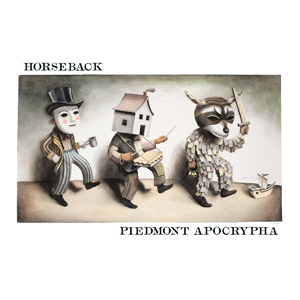 2013 was an uncharacteristically quiet year for Horseback. While leader Jenks Miller released a solo record and the band put out a three disc compilation of limited and unreleased material, that was about it. The result of that hiatus is Piedmont Apocrypha, an album that hits many of the touchstones Horseback has worked with before, but as an evolved, more nuanced album that is polished and more complex than what preceded it.
2013 was an uncharacteristically quiet year for Horseback. While leader Jenks Miller released a solo record and the band put out a three disc compilation of limited and unreleased material, that was about it. The result of that hiatus is Piedmont Apocrypha, an album that hits many of the touchstones Horseback has worked with before, but as an evolved, more nuanced album that is polished and more complex than what preceded it.
The most striking aspect of these five songs are how much they avoid the realm of heavy metal that Miller and crew has consistently dabbled in throughout the band's career.This is pretty clear from the cover artwork:instead of the usual monochromatic, stylized paintings that hint at the tropes of black metal, it instead is a folksy painting on a stark white background.The music follows this shift in aesthetics, mostly stripped down when compared to the southern demonic rock of Half Blood.
One thing that remains consistent though is Miller's expertise in conjuring the backwoods occult, a sense of evil lurking in the dense woods and a sinister undercurrent to stereotypical southern hospitality."Passing Through" is an excellent example of this:based upon a traditional sounding cyclic blues motif with a country twang, the snarling vocals and piercing feedback signify an evil barely being contained.The same feel comes through on "Milk and Honey," with the initial field recordings conveying bleak isolation as the gentle organ and guitar chime away, more mournful than malignant.
The title piece is no different in its ambience, with shimmering organ and twanging guitar slowly filling up space in the mix, becoming more oppressive as it goes on.It is a slow build with the instruments slowly layering in until reaching a full band sound in the latter half, the different layers erratically intersecting before coming together in a locked in folksy, country influenced piece of music.
The sprawling "Chanting Out the Low Shadow" closes the album with a full on band and also results in a succinct primer on the Horseback sound, as elements from the entire catalog show up.The lurching guitar progression eventually leads into Miller's demonic growl that is otherwise absent from Piedmont Apocrypha.Calming down, the vocals shift to plaintive nasal delivery that is reminiscent of an Appalachian David Tibet singing hymns of similar esoteric imagery.Meanwhile the piece continues this classically minimalistic structure, building layers that stretch out and expand dramatically over the cyclic base rhythm.It eventually reaches full on rock, with soaring keyboards and rapid-fire drums in a truly epic climax, before folding back into a coda that sounds like the band playing into a broken radio.
To me, the recent Horseback material has reminded me in some ways of REM's Fables of the Reconstruction, and I mean that as the highest compliment considering my love for that album.While sonically distinct from one another, both have that same southern folk influence tinged with a hint of darkness.REM's may have insinuated a sense of evil while Horseback lays it out bluntly, but I still get the same sense from both, but wrapped in the context of memorable, catchy music.Compared to Miller's recent work the country influence is even more pronounced, and while I must admit to missing the straight ahead rock throb of Half Blood, Piedmont Apocrypha is a more complex work that reveals more of its mythos in due time.
samples:
 
Read More
- Administrator
- Albums and Singles
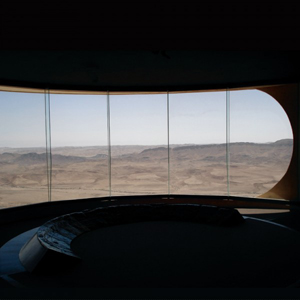 In his 29 year career, Francisco López’s work could never be described as accessible. His treatment and processes of both organic and synthetic sound sources have ranged from pensive to painful, and everything in between those extremes. This, however, may be his most daunting work to date: a data DVD of uncompressed wave files and a total of seven hours. The 17 "quiet" pieces are challenging, yet captivate when experienced in the right context.
In his 29 year career, Francisco López’s work could never be described as accessible. His treatment and processes of both organic and synthetic sound sources have ranged from pensive to painful, and everything in between those extremes. This, however, may be his most daunting work to date: a data DVD of uncompressed wave files and a total of seven hours. The 17 "quiet" pieces are challenging, yet captivate when experienced in the right context.
As with many prolific artists such as López, I have largely dabbled in and out of his expansive discography a couple of times a year.Before, I had considered the 10 disc Nowhere box from 2008 to be quite a difficult collection, but the fact that those were both shorter pieces, as well as ones of significantly varying dynamics made it a bit easier to digest such a wealth of material.
Presque Tout compiles his most minimalist works imaginable, and thus requires an extreme dedication and attention to detail in order to fully appreciate, because many times it is extremely difficult to even discern that something is playing.The sleeve warning that it should only be listened to via headphones or a set of high quality speakers is not to be taken lightly, as smaller speakers simply cannot reproduce this material adequately.
Sequenced in chronological order, the earlier pieces are perhaps the most sparse and also the least engaging.Opener "El Dia Anterior a la Emergencia de los Adultos de Magicicada" (I am still somewhat surprised to see a titled López piece) is mostly 15 minutes of low frequency humming.Even via headphones at a relatively loud volume level, it is almost imperceptible that anything is happening."Untitled #78" is similarly barren, with only the subtlest of ambience, like a field recording of an empty room."Untitled #87" presents a similar sense of stillness and silence, barely crossing the threshold of nothingness.
Pieces such as "Untitled #86" and "Untitled #118" feature some audible elements, and seem to be in league with López's nature based works.The former has an organic life to it, more emphasis on high end and what sounds like possibly birds chirping far away.The latter resembles a swarm of insects from miles away, with the muted dynamic serving to amplify the ambiguity.The more recent works here are also the ones that not only seem the most inorganic, but also the most commanding ones, relatively speaking."Untitled #129" and "Untitled #216" both focus mostly on ultra low frequencies that are more easily felt than heard.The former also has the unexpected addition of a rhythmic rattling that is perhaps the most conventional and boisterous sound to be heard anywhere on this compilation.The latter sticks mostly to its low end, and listening with in-ear headphones results in an uncomfortable feeling of pressure."Untitled #309," mostly made of a creeping industrial din has an oppressive, slowly moving menace about it that almost feels like a non-quiet specific López work, and quite a strong one at that.
The closing piece, "Untitled #313," is the album’s centerpiece, and clocking in at three hours exactly also comprises nearly half of this collection.Featuring many of the elements of what preceded it, the first third is mostly low volume bass swells that slowly creep along, cresting after the first hour as a passage of chirpy synthetic sounds that make for a rather strong contrast.Beyond that, things become more distorted and textural, with bits of digital noises cutting in and out.It does quite a bit of evolution throughout, but I cannot help but feel that its extreme duration may partially be to take advantage of the medium more than to convey a specific sound
I quite enjoyed this collection, but it is admittedly a hard release to recommend to anyone who is not already a López fan.My go-to artist for this type of work is the rather unprolific Bernhard Günter, and while the dynamics are the same, the actual content is not.Presque Tout does not make for a good jumping in point to López's massive discography by any means.For someone who not only is familiar with his works, but also the more minimalist styles he works in, there is a lot of greatness here to be heard.Finding the time to fully devote to experiencing, however, may be the biggest stumbling block, because this requires full attention to truly appreciate, as cliché as that may sound.
samples:
 
Read More
- Administrator
- Albums and Singles
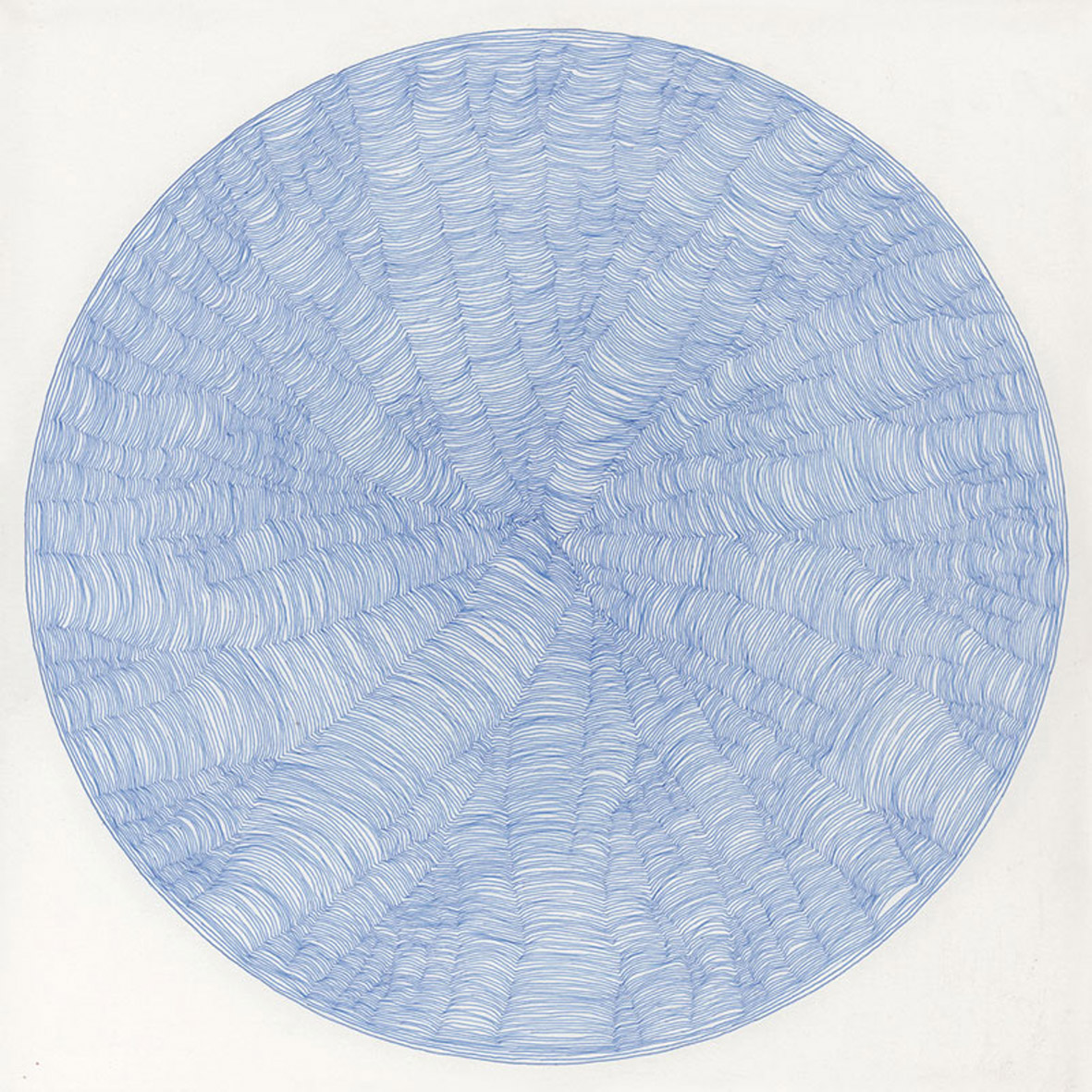
There are a few reasons why I am so late to the party on Daryl Groetsch's work, but the primary one is that I first heard about him in the early 2000s, when he was appearing on albums with titles like All I Want for Xmas is Bowel Disrupting Noise and Underwater Corpse.  Consequently, his transformation into one the premier purveyors of kosmische-inspired long-form analog synthesizer voyages went entirely unnoticed by me.  Another reason, unfortunately, is that Pulse Emitter has a dangerous tendency to veer into cloyingly saccharine New Age territory, as he sometimes does here.
There is a curious paradox at the heart of Pulse Emitter's recent work, as Groetsch seems to increasingly draw his inspiration from the natural world, yet works exclusively with some of the least natural-sounding instrumentation around.  Crater Lake is a prime example of that phenomenon, as it partially originated when Daryl went camping in Crater Lake National Park while working on a planned album inspired by the moons of Jupiter.  The trip had a profound effect on Groetsch, as his original idea became quickly subsumed by a fascination with the similarities between Crater Lake and those distant moons.
Daryl manages to convey that inspiration fairly successfully on the opening "Europa."  Although it takes its name from Jupiter's ice-covered moon that may famously be hiding a secret ocean, its twinkling and radiant shimmer definitely seems more inspired by the sun coming up over an isolated Oregon lake than anything mysterious, distant, and cold.  Which, unfortunately, brings me to my primary issue with Crater Lake: there is not a hell of a lot of depth, mystery, or emotional complexity apparent in these pieces at all.  Rather, they often feel unambiguously beatific, embracing a gloopy, candy-colored pastoralism that I cannot relate to very much at all.  That is probably my problem, as "Europa" is an objectively a very well-crafted composition, but there is a reason why the adage about the devil having all the good music exists.  Wide-eyed happiness is a tough sell, particularly among us experimental music enthusiasts.
Groetsch does arguably toss me a bone with the brooding, distorted "Io" (inspired by some jagged rock outcroppings at the lake), but he does not exactly play to his strengths (patterns and melodies).  Unfortunately, the following "Enceladus" returns to Pulse Emitter's most gently burbling and bucolic tendencies with a goddamn vengeance that comes close to unlistenability for me.  The closing "Titan" thankfully rights the ship, however, offering up some nicely understated, warm, and meditative swells augmented by a languorously cascading melody, chime-like fluorishes, and a surprisingly active and unpredictable pattern of bass bloops.  It is by far Crater Lake's best piece, so at least Daryl started the album promisingly and ended strong. Shame about the middle though.
The truly exasperating thing about this lukewarm review is that I have heard some Pulse Emitter songs that I have genuinely loved.  There have been quite a few that I have hated as well, but Groetsch is capable of truly wonderful work.  In fact, some of Crater Lake might even be wonderful work, but Daryl's brighter, cheerier side clashes so violently with my personal sensibilities that it is impossible for me to fully appreciate any of it.  Yet another perplexing aspect of Crater Lake is that it is a fairly high profile release for Pulse Emitter, but it is eclipsed by some of his limited edition cassettes.  In any case, I am pleased that this album will likely get Groetsch more exposure than he is used to, though I will probably spend a lot more time sifting through his back catalog than I will revisiting this particular effort (I do want to go to Crater Lake now though–I guess that might count as a triumph of sorts).
 
Read More
- Administrator
- Albums and Singles
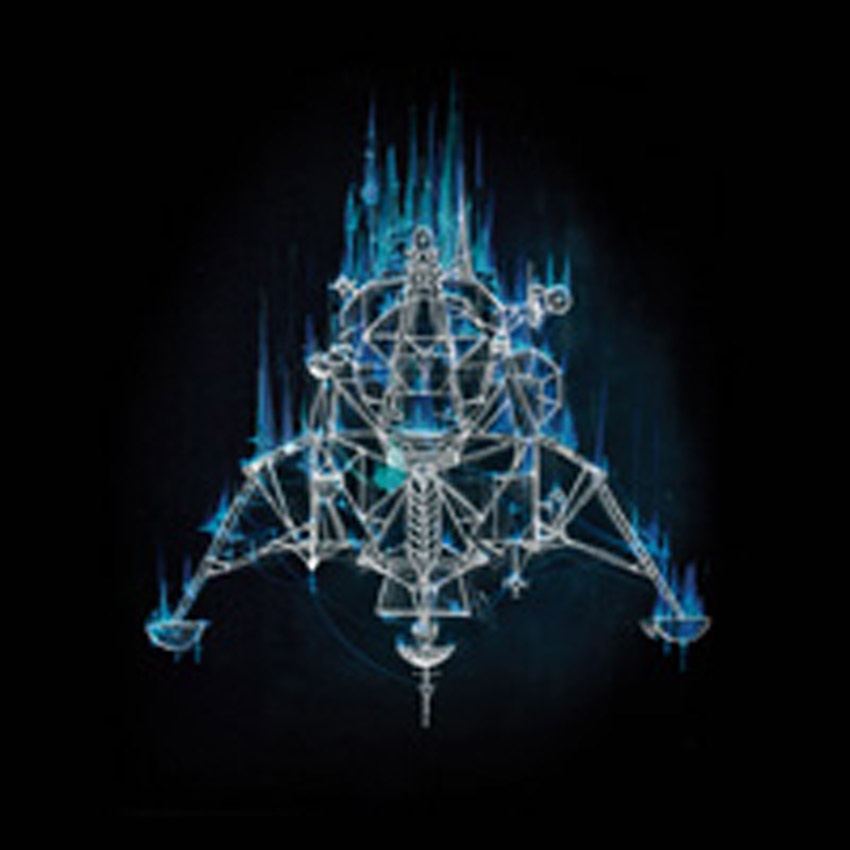
It has taken me entirely too long to get around to covering a Petrels album, but London composer/multimedia artist Oliver Barrett's third opus turned out to be an ideal place to start.  Due to the complex and heavily processed nature of these pieces, the closest reference point is probably someone like Tim Hecker, yet Barrett's epic scope; talent for texture, dynamics, and melody; and passion for deep and unusual concepts place both Petrels and Mima in a category all their own.
With both Talvihorros and Petrels on board, Denovali seems quite intent on becoming the go-to label for records with crazily ambitious concepts.  Case in point: Mima is partially based upon an epic and obscure (in the US, anyway) science fiction poem by Swedish Nobel Laureate Harry Martinson.  The poem in question, "Aniara," chronicles the existential struggles of colonists stranded on a spaceship that has been ejected from the solar system and has been described as "inexpressible, immeasurable sadness" that "transcends panic and terror and even despair [and] leaves you in the quiet immensities, with the feeling that you have spent time, and have been permanently tinted, by and with an impersonal larger-than-God force."  Woah.  Consequently, Mima is the sort of album that I expected to describe with phrases like "unintentionally hilarious" and "egregiously misjudged" and–in lesser hands–I am sure it would have been all that and more.  Or at least it would have just been oppressively bleak dark ambient.  In Barrett's hands, however, Mima is beautiful, sublime, and kind of staggering.
The album begins in deceptively simple and minimal fashion though, as the 15-minute "The 40 Year Mission to Titan is Overtaken by the 40 Minute Mission to Titan" opens with field recordings of crickets and a hollow metal clunk that calls to mind some hanging pots and pans in an abandoned shack being blown by a lonely wind.  The insectoid chatter gradually escalates in volume and is eventually joined by a warmly droning synth and some cymbal flourishes, but just keeps simmering until it finally gives way to a brief and somewhat unpromising interlude of stuttering, burbling synth.  And then...Mima just ERUPTS.  The last third of "The 40 Year Mission" is a densely majestic, well-earned crescendo of layers and layers of vibrantly alive synthesizer catharsis.  From that point onward, Mima is a lush, gently hallucinatory tour de force of warm chords and raw power mingled with quieter, more fragile passages fraught with mystery and accumulating tension.
Remarkably, every single one of the remaining pieces offers up at least one passage that I absolutely love.  "Katharine-22B," for example, masterfully transitions from a rapturous roar to a beautifully melancholy arpeggio melody, while the closing "Treetiger" brings the album to a roiling conclusion with a melodic wall of swirling, gnarled, and howling synthesizers or guitars that would make Kevin Shields proud (and probably little bit jealous).  Mima's pièce de résistance, however, is its third piece: "A Carapace for Carter's Snout."
Much like "The 40 Year Mission," it begins in very understated fashion, opening with some dueling feedback whines that uncomfortably wobble and oscillate together.  Gradually, Barrett allows a characteristically warm and sumptuous chord progression to fade in and gradually eclipse the initial motif.  More importantly, he also introduces a dense layer of skittering, squiggling electronics that stays for the entire song, resulting in one of my favorite musical moments of 2014 to date: the moment when all the music abruptly disappears to leave something that sounds like the ocean just spewed a squirming, chittering, slithering, and squelching mountain of deep sea life onto a beach.
The sole critique that I can muster is that Oliver's occasional drums prevent Mima from fully attaining an illusion of timelessness, as they ensure that it sounds like it came from this decade.  That "rock element" may also prevent some from seeing Barrett as a serious composer, as "Treetiger" certainly has more in common with shoegaze/post-rock than with more elitist/cerebral fare.  That is certainly not Barrett's problem though and this album certainly sounds amazing NOW.  At worst, Mima is a brilliant and ambitious album with one stone-cold masterpiece in "Carapace," but I am choosing to err on the side of calling the whole thing an unqualified triumph of both vision and execution.  Mark my words: within six months, everybody is going to be basing their albums on 60-year-old Swedish science fiction poems.
- The 40 Year Mission to Titan is Overtaken by the 40 Minute Mission to Titan
- Katharina-22B
- A Carapace for Carter's Snort
 
Read More
- Administrator
- Albums and Singles
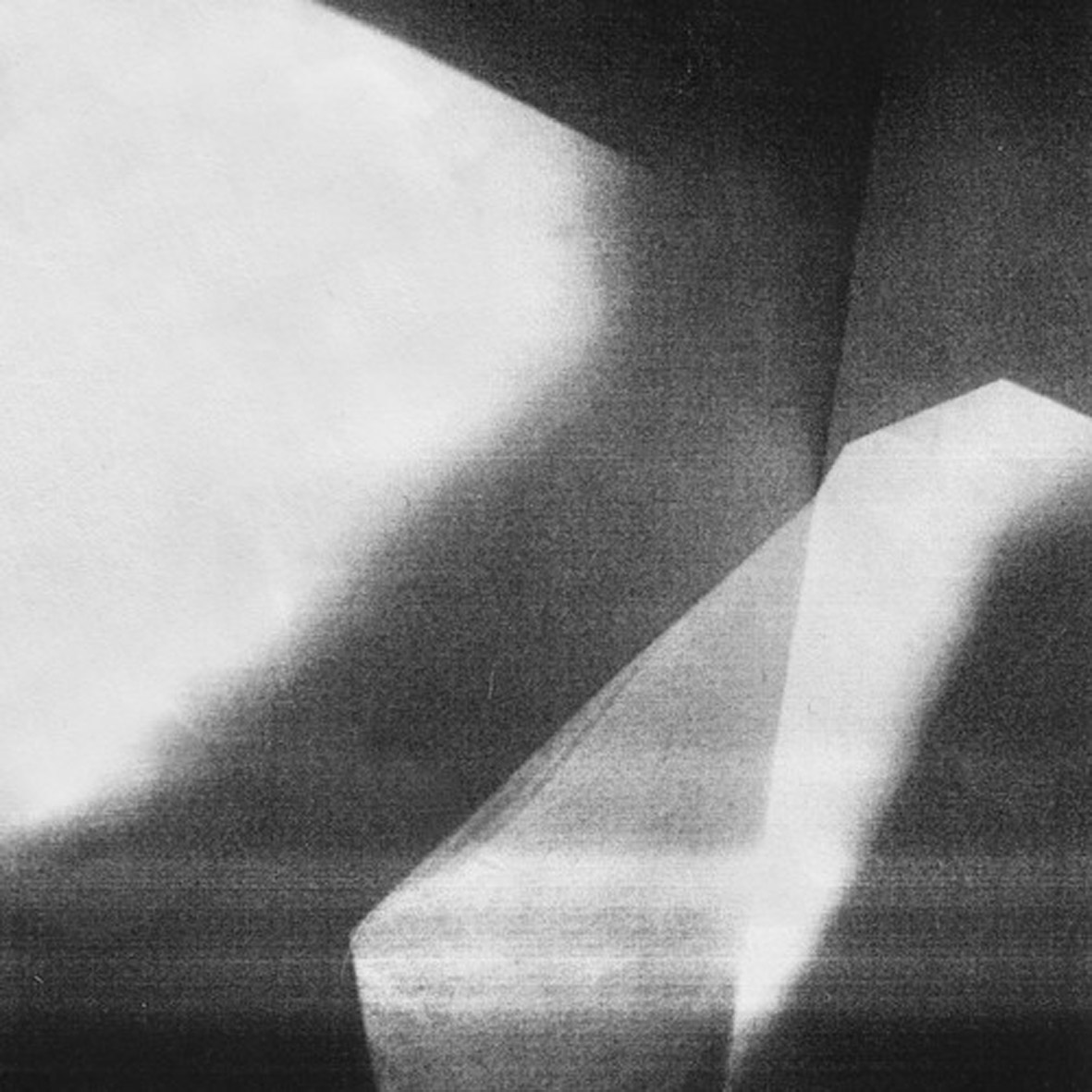
As much as it pains me deeply to use this adjective, this Manchester duo seem to specialize in something resembling hypnagogic techno. At the very least, they attempt to refract more conventional techno sounds through a drugged/half-asleep/eyes closed/out-of-body sensibility that is seemingly all their own.  That is a tricky feat to pull off though, as the line separating "ghostly and diffuse" from "boring, forgettable, and easy to ignore" is quite a narrow one.  Fortunately, both of these EPs are likable (if flawed) in their own right and admirably a bit beyond the pale, but the newer New Brutalism is significantly more sharply realized than its predecessor.
Struck certainly starts off strongly enough though, as the title track's combination of a lurching bass drum thump with a slow-motion machine gun snare roll is quite infectious.  The song's other elements are what make Rainer Veil something out of the ordinary though, as Liam Morley and Dan Valentine spend the rest of the piece trying to artfully undercut that great beat.  Rather than intensifying or building up a groove, "Struck" instead augments that wonderfully clattering beat with lush synth swells that feel like slow, deep exhalations.  Also, the beat itself starts to subtly come apart, occasionally derailing into descending unfunky clunks rather than the expected snare roll.  Fortunately, the beat is still ultimately propulsive enough to hold the song together and even serves as a strong hook of sorts.
Most of the other songs fare a bit less well, however, though they are almost all built upon at least one inspired motif.  "Slow Beaming," for example, has a pleasingly sultry, understated groove, while "Bala" boasts a nice "skipping CD" loop and a spectral, drifting vocal hook (of sorts).  Unfortunately, "Beaming" ends after little more than two minutes with no real development, while "Bala" stretches out for seven minutes, but gradually dissolves into hazy ambient drone.  "Wade In" returns with a similar disembodied, artificial-sounding vocal hook, but takes things in the opposite direction and (unsuccessfully) attempts a conventional song structure with an almost-chorus that feels very awkward, forced, and stylistically divergent from the rest of the release.
Struck closes with "Yield," which initially seems like a hissing, warm ambient piece, but is quickly enlivened somewhat by a deep, buried beat and more whispy, barely-there vocals swoons and moans before gradually drifting to a conclusion.  More importantly, "Yield" is inadvertent microcosm of why Struck is such an exasperating release: I genuinely appreciate Morley and Valentine are trying to do, but so much of this EP occupies the no-man's land between techno and ambient that is too dull to remember, but too carved-up into song-like pieces to get fully absorbed in.  Consequently, Struck is best appreciated as a cool single with great intentions and a bunch of weaker bonus tracks tacked on.

New Brutalism wises reprises the elements of Struck's strong opening with "UK Will Not Survive," offering up a hobbling, clattering beat of its own amidst a thrum of droning, hazy synths.  Dan and Liam also make some subtle (but welcome) tweaks to their formula, adding some alternately snarling and grinding layers of textures and sending their groove through a number of satisfyingly dynamic crests and valleys.  The energy level plunges a bit for "Negative Space," but that it does not entirely kill the momentum–it just drags things deeper into Rainer Veil's bleary, nocturnal wheelhouse, as the duo's increased imagination and variety with their beats happily follows with them to enliven their de rigueur warmly hissing synth drones.
The EP's longest piece ("Three Day Jag") follows, taking the warped vocal hooks of Struck into even stranger, more distant, and more inhuman territory.  Again, the "music" is more of a swirling, drifting blur of synths and ruined samples set to a groove than anything resembling modern techno.  In fact, The Caretaker might actually be the closest reference point, as "Jag" basically feels like a dance remix of a haunting, as its increasingly propulsive beat is essentially propping up little more than an ominous hum, distant gnarled voices, and creepily echoing clattering.  I especially enjoyed how the echoes created a lingering after-image of the stuttering stop-start pattern of the drums.
"Strangers," on the other hand, is a less adventurous return to the "vocal hook" side of Struck, though it still displays a nice evolution: Valentine and Morley definitely have a lighter touch this time around and they also seem to have developed a better intuition about when an idea begins to wear out its welcome.  Consequently, "Strangers" inadvertently renders most of Struck's second half obsolete, as it is simultaneously more propulsive and vibrant, yet less overtly heavy-handed.  It gets particularly good around the halfway point when the beat kicks in, as the duo allow it plenty of space to make its thudding impact and their synth motif has just enough melodic movement to suggest the hint of a song without quite breaking the sleepily hallucinogenic spell of the earlier pieces.
The closing "Run Out" is a nicely dystopian aberration, as it initially approximates a field recording of the distant clangs and rumbles of a factory in an otherwise deserted town before some murky synth swells darken the mood further.  In fact, I enjoyed the illusion so much that I was actually disappointed a little when the beat kicked in and dragged me back to reality.  I understand that this is ostensibly a "dance" release, but ending the EP with that last two-minute flourish of "groove" was a puzzling move, as it does not actually take the song anywhere interesting and ruined what would have been an effectively striking and desolate ending.  Oh well.  Although New Brutalism is still not entirely great, it certainly marks a significant compositional and dynamic improvement over its predecessor and boasts some promising flashes of real inspiration.  Even making a merely good EP in this vein is a remarkable achievement though, as weaving drifting, drowsy emptiness into gold is a feat of alchemy that few would dare to even attempt.
Samples:
 
 
Read More
- Administrator
- Albums and Singles
 Utilizing the sound of tuning forks, a method of generating tones that goes back far into history, Nicolas Bernier places them in a motorized, computer controlled installation that belies the simplicity of its core. The single piece moves quickly, evolving from the simple resonating tones to a dense, complex synthesis of the naturally captured resonance and the computerized processing of the pure source material.
Utilizing the sound of tuning forks, a method of generating tones that goes back far into history, Nicolas Bernier places them in a motorized, computer controlled installation that belies the simplicity of its core. The single piece moves quickly, evolving from the simple resonating tones to a dense, complex synthesis of the naturally captured resonance and the computerized processing of the pure source material.
This approach to creating music is not a new one for Bernier, who has utilized numerous forms of archaic and unconventional sound generation tools (typewriters, malfunctioning machinery, etc.) but paired with modern technologies to create a hybrid of the old and new.The result sounds like neither time period specifically, but instead exists in some ambiguous area between the two.At the same time he juxtaposes composition and improvisation as well, with some moments of this long piece sounding rigidly structured by the machinery he created, and others feeling like knob twiddling at its finest.
The introductory moments of the piece stick mostly to the natural sound of tuning forks:each crystal clear chime is allowed to reverberate and resonate into silence, the space between the tones carrying just as much importance.The various tuned forks begin to overlap with one another, the fragmented sounds meld together, and with the added sine waves the complexity becomes astounding.
The digital manipulation is rather subtle at this point, mostly limited to looping and echoing pieces of the sound to extend it.As the processing and the machinery both speed up, the quick tones hitting in rapid succession it begins to resemble a large, digitally manipulated music box.Things begin to change once some extremely low end passages come in and offset the sharp metallic ringing sounds that have defined the composition up to this point.
At this point, about half way through, the organization of the piece seems to come apart, with shards of high end harshness cutting through and the ultra-sonic microtones make for what I assume is a perfect simulation of tinnitus.Everything here becomes a churning mass of noise that still resembles the standard sound of a tuning fork being struck at times, but only vaguely.The closing moments go back to a more stripped down approach, but now heavily bathed in the digital processing from before, ending in a realm of hushed, inorganic textures and near silent bits of noise.
I often find this type of academic sound art challenging to listen to too frequently, but that was not the case with Fragments.I was engaged throughout my first listen, and I gave it a second spin a relatively short time later.Bernier does such an impressive job at mixing the natural and the synthetic, and at times the work hints at the loose improvisation of harsh noise and the clinical precision of the minimalist of techno music without ever fully sounding like either one.That ambiguity, and the album’s fast pacing, make for an excellent work.
samples:
- Frequencies (a/Fragments) (Excerpt 1)
- Frequencies (a/Fragments) (Excerpt 2)
- Frequencies (a/Fragments) (Excerpt 3)
 
Read More
- Administrator
- Albums and Singles
 Joao Da Silva’s Luciernaga project has been active only a relatively short time thus far, with releases dating back to 2010, and obviously material here going back even further. This disc compiles selections from ultra limited cassettes, split releases, and unreleased work that stands out well in the often crowded field of ambient drone works. Nicely alternating between harshness and soft, gauzy textures, the result is a dynamic and cohesive collection of material.
Joao Da Silva’s Luciernaga project has been active only a relatively short time thus far, with releases dating back to 2010, and obviously material here going back even further. This disc compiles selections from ultra limited cassettes, split releases, and unreleased work that stands out well in the often crowded field of ambient drone works. Nicely alternating between harshness and soft, gauzy textures, the result is a dynamic and cohesive collection of material.
Of the ten pieces collected, I felt myself latching on most quickly to the ones that featured more overtly perceptible instrumentation, or at least sounds that resemble conventional instruments.The spacey, reverberating guitar bathed in a tasteful sea of fuzz that cuts through the cavernous warehouse ambience of "If You See/The Pulse of Water (Reprise)" is a perfect example of this.A similar late appearance of distorted guitar also adds a lot to "Long Wave", offsetting the haunting melodic electronics that precede it.
Not so clear is the possible vintage organ of "Maquinaria" that is coated in tremolo to approximate a slow rhythmic pulse.It takes its time, but the slow burn approach builds the space around the sound up nicely, even if the evolution is subtle.More immediate is "Are Crawling," with a nasal, panning burst of electric sound that, once the layers are stripped away a bit, sounds like it could be the twang of a sitar.
Other pieces seem, at least on the surface, less obvious in their source.The rhythmic feel of "She Is Here, With Us" is structurally similar to "Maquinaria," but comprised mostly of heavy, booming electronic noises that, paired with the funereal pace, is moody to say the least.The shimmering noises and fuzzed out bursts of "Fuente" are part of a rather short piece, but the piece does accomplish what was intended quickly via its light and floaty sound.
That lighter feel appears again on "Something Witchy" but within a muted framework that works with a similar palette of sounds but results in a film-score like piece of audio noir.The long closing composition "Cadaveres" makes for the ideal climax to this collection.Mixing in the defining elements of the Luciernaga sound into a single work, it has a noisy guitar squall that is rather dissonant, but held back by a calm ambiance that balances everything out, while the latter bits bringing in some shrillness that keeps it nice and acerbic.
With his sparse discography, this disc makes for the perfect jumping in point to hear the work of Joao Da Silva.By all accounts it is just a tidying up of a mostly out of print back catalog, so it manages to not come across as an epilogue like these works often are for many artists.Instead it works as an excellent primer for what I hope to be many more new releases.
samples:
 
Read More
- Duncan Edwards
- Albums and Singles
 This trio from Tel Aviv has created driving and airy songs suffused with somewhat doom-laden yet inspiring vocals, hollow rhythms, and gauzey guitar, for an album which could easily masquerade as a release from 1980s Manchester or Glasgow.
This trio from Tel Aviv has created driving and airy songs suffused with somewhat doom-laden yet inspiring vocals, hollow rhythms, and gauzey guitar, for an album which could easily masquerade as a release from 1980s Manchester or Glasgow.
Juvall Harring wrote the songs for The World Is Well Lost while in something of an exile. His wife was home in Israel, his grandfather had just passed away, and his friends were protesting in the streets of Tel Aviv. Meanwhile he was alone in Berlin, basically in a somewhat depressed state singing in a room alone and making demos. That state makes for rather ecstatic listening since, through a necessarily slow process of recording to two-track and gradual layering, the finished form of this music has such a strong sense of well-crafted economy and precision.
Harring sings in Hebrew but the effect, either of that language or of his brooding voice, is somehow just right to create this driving, moody, melodic, hollow-toned atmosphere. This is the kind of sound which relies less on lyrics and much more on the voice as an additional instrument of color and shade. Oddly, though, at times some of the words do almost translate into surprisingly apt lines or phrases. At one point Harring appears to sing "showing me the echo" as well as "memory, gets in front of her." Later I could swear I hear "rain, falls, waiting" and "lonely shore" or "love me, sure." There are other such moments which add to an album that he has described as concerned with "End of the world, but at the same time, togetherness. Also retroism as escapism, and escapism as a positive thing, rather than a cop out."
Vaadat Charigim’s influences are pretty open to see, and there is no need for me to name names. On a couple of tracks, though, they sound as if they are falling, if not exactly through space sending a chiming coded message to Earth, then at least down a very big well. The World Is Well Lost may feasibly be too droney and shoegazey for some people and too light for others - it was released at the tail end of 2013 and the group are playing in the US in March 2014.
 
Read More
- Administrator
- Albums and Singles
 This Brooklyn-based composer's debut release for Students of Decay is quite an unusual effort, placing its emphasis most prominently on frequently untreated field recordings of natural spaces (as well as a few unnatural ones).  Even the instrumentation is atypical, as Guthrie uses violoncello and contrabass to weave a creaking, moaning bed beneath French horn playing that frequently sounds like a very large, very sad bird.  There is seemingly not much happening compositionally (overtly, anyway), but Codiaeum Variegatum's languorous, organic, and unfamiliar soundscapes are a lovely place to linger nonetheless.
This Brooklyn-based composer's debut release for Students of Decay is quite an unusual effort, placing its emphasis most prominently on frequently untreated field recordings of natural spaces (as well as a few unnatural ones).  Even the instrumentation is atypical, as Guthrie uses violoncello and contrabass to weave a creaking, moaning bed beneath French horn playing that frequently sounds like a very large, very sad bird.  There is seemingly not much happening compositionally (overtly, anyway), but Codiaeum Variegatum's languorous, organic, and unfamiliar soundscapes are a lovely place to linger nonetheless.
This album takes its name from the croton, a plant type with seemingly infinite leaf forms (and a very enthusiastic following).  In fact, it is probably safe to assume that Guthrie used crotons as the thematic basis for the album's content as well, as each of the six songs is titled with a descriptive phrase that could be used to describe a plant and all seem like (increasingly divergent) variations on a theme.  The opening "Branching Low and Spreading" nicely covers just about everything that Guthrie has to offer on Variegatum: deep, groaning string drones; quavering, animal-like French horn moans; and a backdrop of happily chirping birds near a river or waterfall.
The rest of the album does not initially depart very far from that pleasing template, which is perfectly fine–it just means that Codiaeum feels more like a single ebbing and flowing piece that grows increasingly strange rather than six discrete ones.  Things take a deceptively long time to go off the rails though, as "Strongly Leaning with Irregular Crown" only enhances its droning strings with an unexpected passage of bowed arpeggios and a very spirited squawking solo by a bird who is clearly trying to make the most of his big break.  "Unlike More Slender and Graceful," on the other hand, sounds like a negative image of the previous pieces, as Guthrie's strings sound distant, hollow, and vaguely metallic.  "Long Pendulous" is then even stranger still, sounding like Anne is playing strangled, moaning French horn in a sewer beneath a city, accompanied only by a chorus of angry tea kettles or a swarm of mutant crickets.
The proceedings continue to occupy very strange territory with the album's longest and arguably best piece, "Rough Above with Uneven Base," as Guthrie unleashes a wonderfully dissonant and undulating bed of hazy drones and horn swells.  I suspect the wobbly, "falling apart" feel of the drones is due to some sort of tape manipulation, but most of the piece is able to sustain the bizarre illusion that it is an untreated underwater field recording of a bunch of melancholy whales lamenting their lot in some foggy, secluded cove.  "Persists into Winter" then closes the album with a radical change in ambiance, dispensing with music almost entirely to approximate a very lo-fi reverb-heavy recording from the depths of a subway tunnel.  Guthrie occasionally bows a string or two, but the piece definitely seems most focused upon providing an unusual sense of place.
"Winter" is admittedly a somewhat weak note to end the album on, but a lot of Guthrie's charm lies in the album's lazily, meandering "aural travelogue" feel and in her restraint, so it is not exactly a wrong note.  The rest of Codiaeum Variegatum's appeal, for me anyway, is mostly due to the natural flow of the early pieces and their relative guilelessness.  In fact, a small part of me was actually disappointed that Anne took the album into increasingly experimental and subterranean places after its strong, but comparatively static, opening.  Ultimately, however, I liked this album quite a bit.  I certainly have not heard much else that sounds like this and Guthrie's confidence in throwing herself wholeheartedly into something so unconventionally musical is impressive, as is her complete avoidance of any clichés or current experimental music trends.  Codiaeum is a refreshingly understated, small-scale gem.
 
Read More
- Administrator
- Albums and Singles
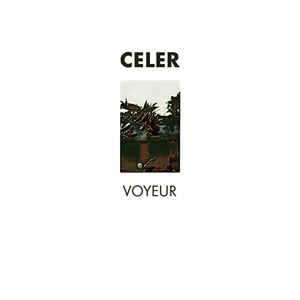 The material that makes up Voyeur dates back to 2008, when Celer was at their most prolific as a duo. Intended to be a film score, the sound of this album is in league with the contemporaneous work they were putting out, but there is a distinctly different feel to this album, possibly due to its conceptual framing, or perhaps because of the project’s more conservative release schedule as of late.
The material that makes up Voyeur dates back to 2008, when Celer was at their most prolific as a duo. Intended to be a film score, the sound of this album is in league with the contemporaneous work they were putting out, but there is a distinctly different feel to this album, possibly due to its conceptual framing, or perhaps because of the project’s more conservative release schedule as of late.
Unlike many of the other Celer releases of this time period, Voyeur consists of smaller, independent pieces rather than long form compositions, or sprawling single-track sequencing of shorter works.This is an asset, because it introduces a consistently shifting mood or flow to the album while still linking each piece together sonically.For example, the shrill, glass shattering tones of "Bitter Light and Anticipating a Day Heat (The Isolated)" are not only sharp, but erratic in their appearance, creating a sense of tension that is never fully released.It is followed by "The Spilling, Romantic Goodbye (The Lovers)," a piece which dulls the aforementioned tones back to a more metallic shimmer and therefore has a looser and less oppressive sense.
As Celer works heavily with quiet passages and hushed moments, the jagged feedback of "Binoculars, a Telephone, and Fear (The Note)" cuts through wonderfully, preventing the album’s more peaceful moments from falling too far into the background.The low frequency malignancy and dissonance of "Bass Puncture (The Pressure Urge)" also does an exemplary job of conveying aggression while not relying on volume surges, and the harsher, spiky second half of "Lofty Swells (An Impending Advance)" is another wonderful example of the album defying expectations.
At this point, Celer was a duo of Will Long and his late wife Danielle Baquet-Long, who contributes vocals to this album.Perhaps it is that fact, along with the thematic nature of the album, that paints everything with a certain intimacy that is at times almost unsettlingly personal.This is most prevalent in the latter moments of the record, with "Impossible Escape (The Amicable Understanding)" and "Finale (After Midnight)" especially.The former has a consistent, constant sound (as opposed to the ebb and flow of many of the other pieces) but seemingly confined or held back by some external force, the source of the forced restraint lurking somewhere in the distance.The latter mirrors the opening, but with what sounds like fragments of an old pipe organ being slowly peeled and disentangled.The album closes with a lighter feel, but a sad undercurrent that tinges the piece.
Using the label of Voyeur, and the references made throughout the titles of these pieces, there is a representation of the more sinister, disturbing aspect of the term, but by no means is it that one sided.The gentler moments, especially on the closing "Finale," instead come across more like an intimate look inside someone’s life and all of the personal details that would come with such an observation, rather than a lurking act of creepiness.In a culture so focused on other people’s personal lives, Will and Danielle Baquet-Long have created a work that shows the personal, emotional side of such voyeurism.
samples:
- Binoculars, a Telephone, and Fear (The Note)
- Bass Punctures (The Pressure Urge)
- Impossible Escape (The Amicable Understanding)
 
Read More


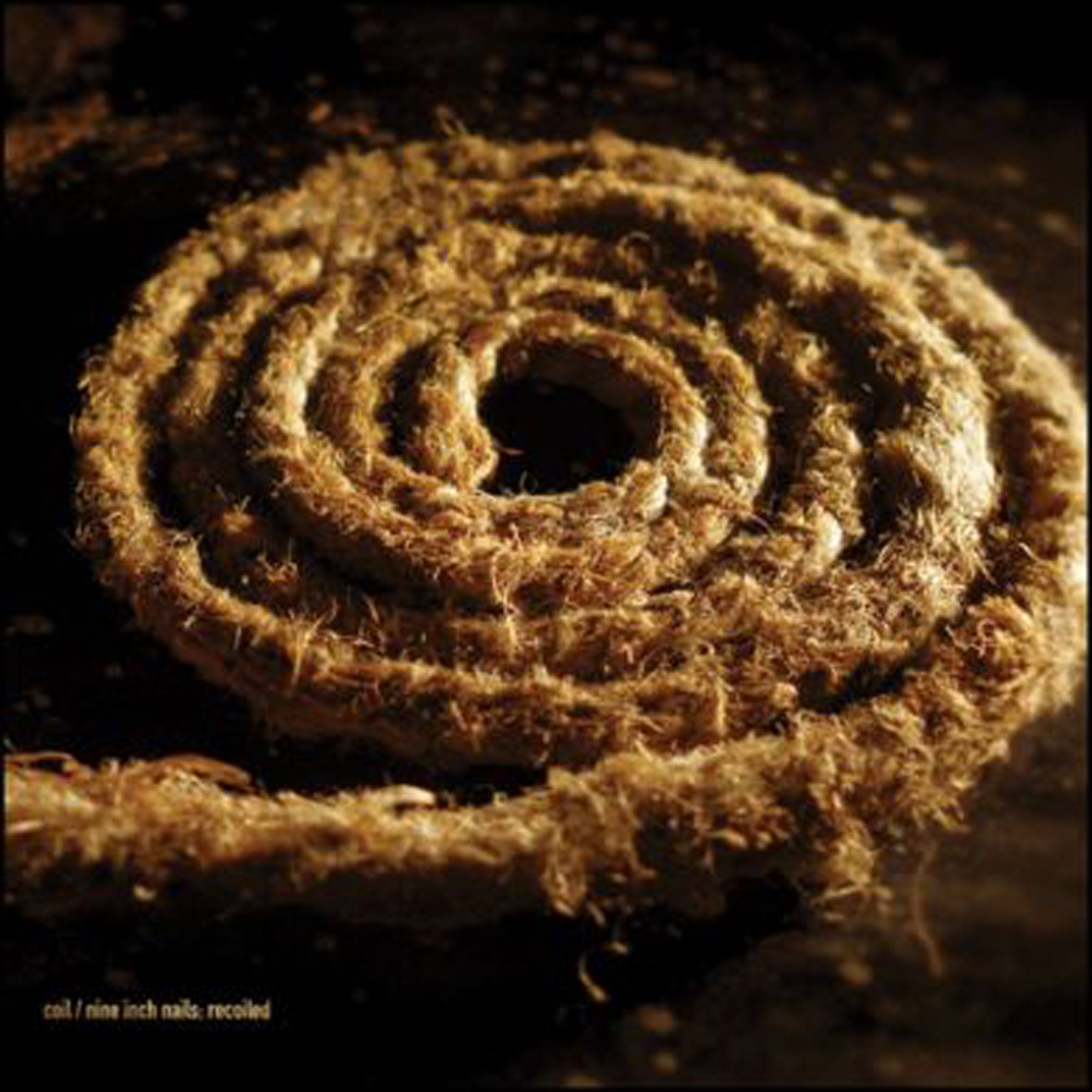 aborted
aborted